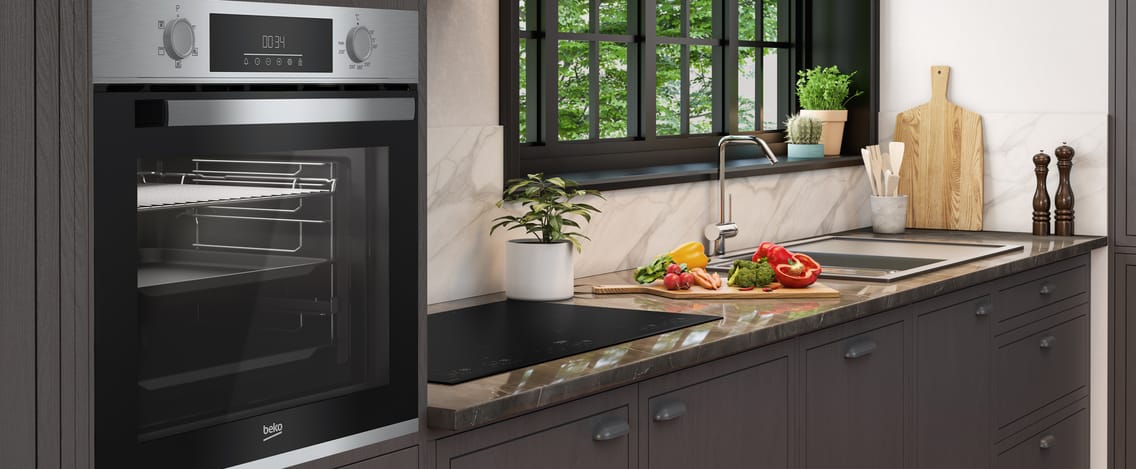Built-In Oven and Grill Ventilation: Requirements & Best Practices
Beko built-in ovens and grills come with a ventilation system designed to ensure safe and efficient operation, making proper ventilation an essential feature for any kitchen.
Ventilation is not only important for your safety, but it is also hugely beneficial for the oven's energy-efficiency, ensuring optimal cooking performance and reduced cleaning needs.

Why Ventilation is Crucial for Integrated Ovens and Grills
Without the adequate ventilation in place in your kitchen you are putting yourself at a much higher risk of potential hazards arising.
It is vital that heat is allowed to dissipate through adequate ventilation, due to the heat that a built-in oven and grill can produce whilst operating.
Proper ventilation will help remove smoke and fumes from your kitchen that if left to accumulate could be harmful, and even cause respiratory issues.
Not just for smoke and fumes, ventilation will also work to prevent the accumulation of dangerous gases like carbon monoxide, extracting them to the outside of your property.
Ventilation Requirements for Different Types of Integrated Ovens and Grills

If you are installing a ventilation system for an integrated electric oven it is vital certain requirements are considered before the fitting is booked in.
The first consideration will be to read your installation manual to obtain the recommended clearance around the oven. Without this, suitable airflow may not circulate, and the unit can overheat.
Beko ovens are designed to vent through the lower front, ensuring efficient airflow during operation. To ensure proper installation and optimal performance, it is important to follow the instructions provided in the installation guide.
When choosing the right placement in your kitchen it should be a place where the space is generally quite open, as again, airflow issues can arise when ventilation is installed in a tight area.
Following the manufacturer guidelines for both your electric oven and ventilation system is the best way of preventing any or all these issues from arising.
Ensuring Compliance with Safety Standards
The UK has strict regulations and safety standards when it comes to gas appliances, which were introduced to maintain the security of users.
The Gas Safety (Installation and Use) Regulations 1998 states that all gas appliances must be installed by a Gas Safe engineer to ensure safety and compliance regulations are adhered to.
It also states that gas appliances must have adequate ventilation in place to prevent harmful gases such as carbon monoxide.
Keep this in mind when you are looking into purchasing a new Beko built-in oven.



